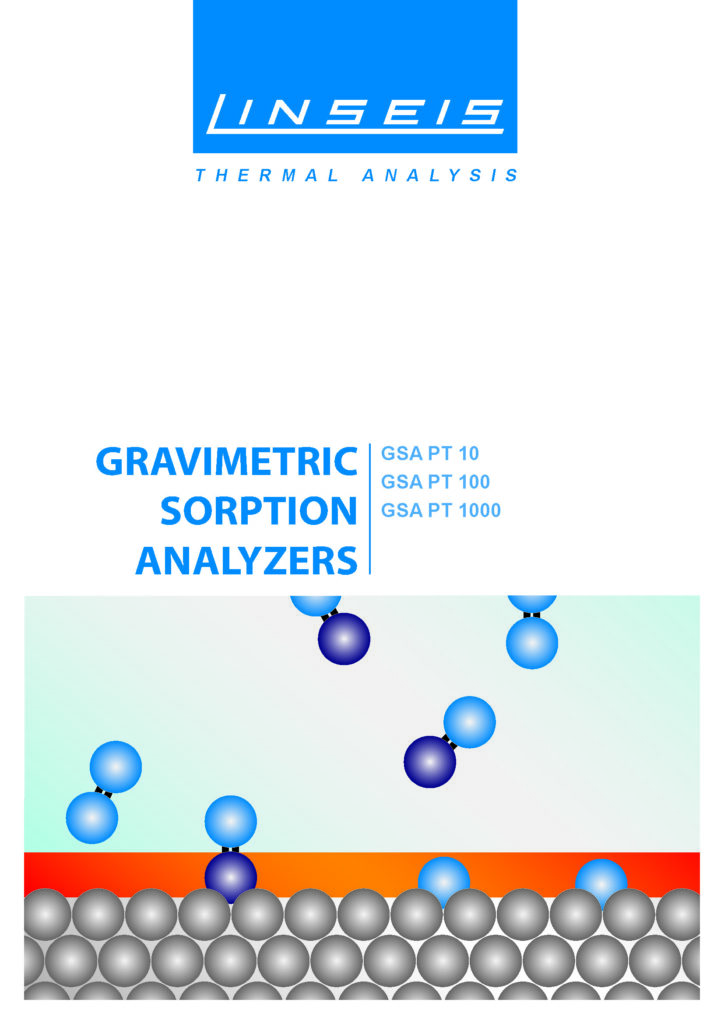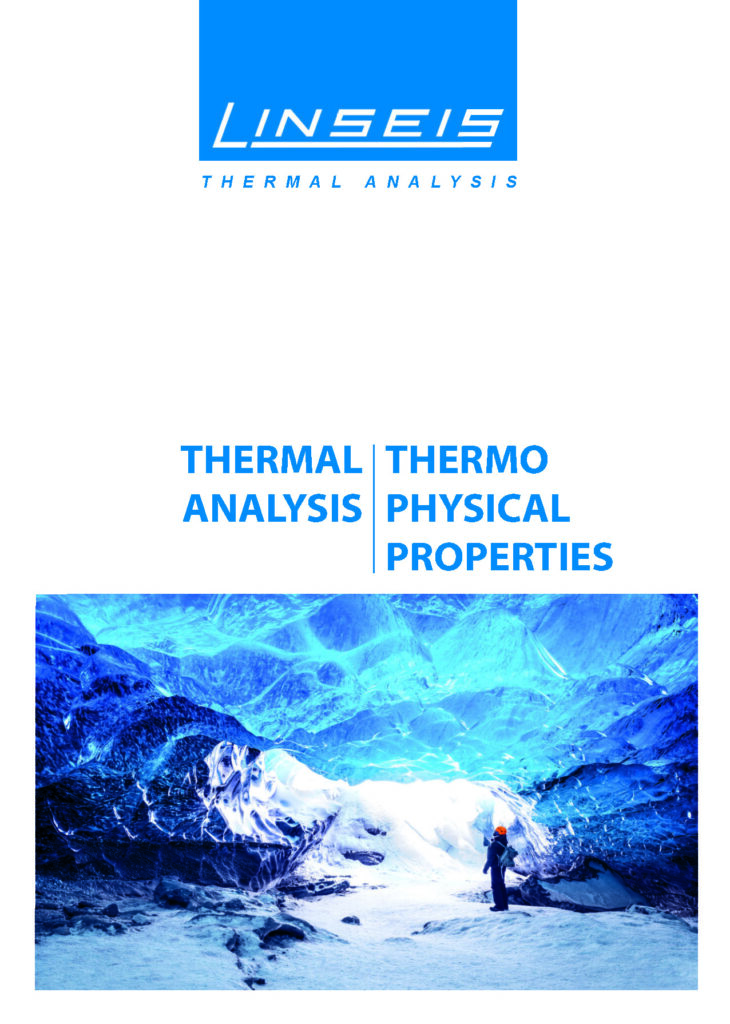Description
To the point
The GSA L23 series is based on the proven Linseis microbalance design.
This extremely sensitive microbalance is available in two versions, with a maximum initial weight of 2 / 15 / 100 g and a resolution of 0.1/1 ug.
The maximum temperature range is from -150 to 1800°C, with a maximum pressure range from UHV (ultra-high vacuum) to 150 bar.
An optional TG-DSC (Thermogravimetry – Differential Scanning Calorimetry) sensor enables the simultaneous determination of weight change and caloric reaction in a single measurement.
Optional gas and vapor dosing systems are available as well as the possibility of coupling to residual gas analysis.
Unique features
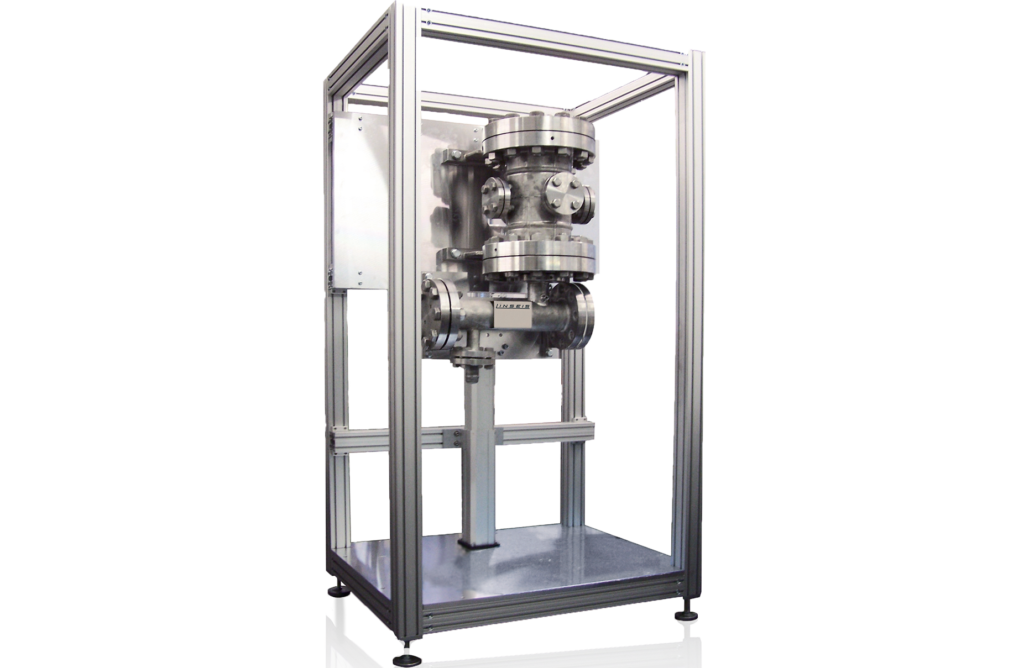
Wide temperature and pressure range:
measurements from -150°C to 1800°C
and pressure range from ultra-high
vacuum to 150 bar
Highly sensitive microbalance:
Available with maximum initial weight
of 5/25 g and resolution of 0.1/1 µg.
Simultaneous TG-DSC analysis:
Optional sensor for Simultaneous
determination of weight change
and caloric reaction.
Flexible gas and vapor dosing:
Support for a wide range of gases and vapors.
Wide range of applications:
Sorption processes, chemical
reactions, in-situ gas analysis
and more.
Questions? We're just a call away!
+1 (609) 223 2070
+49 (0) 9287/880 0
Our service is available Monday to
Thursday from 8 am to 4 pm
and Friday from 8 am to 12 pm.
We are here for you!
Specifications
Hard Facts
MODEL | GSA L23* |
|---|---|
| Temperature range: | RT up to 1100°C and max. 150 bar RT up to 1400/1800°C and max. 50 bar |
| Vacuum: | 10E-4 mbar |
| TGA | |
| Max. Sample weight: | 2/15/100g |
| Resolution: | 0.1/0.5/10 µg |
| DSC | |
| DSC resolution: | 0.3/0.4/1 µW |
| DSC sensor: | E, K, S, C |
| DTA | |
| DTA sensitivity: | undefined |
| Options: | Gas mixing plant |
| Atmosphere: | inert, oxidizing**, red, vac. |
| *Specifications depend on the configurations **Not possible with graphite heater |
|
Software
Making values visible and comparable
The powerful LINSEIS thermal analysis software, which is based on Microsoft® Windows®, performs the most important function in the preparation, execution and evaluation of thermoanalytical experiments, in addition to the hardware used.
With this software package, Linseis offers a comprehensive solution for programming all device-specific settings and control functions, as well as for data storage and evaluation.
The package was developed by our in-house software specialists and application experts and has been tried and tested over many years.
TG properties
- Percentage (%) and absolute (mg/ug) change in mass
- Evaluation of the mass loss
- Residual mass determination
- 1st and
2nd derivative (peak temperature of the mass change)
HT-DSC properties
- Complete glass dot determination
- Specific heat Cp determination
- Multible measuring/melting points for temperature calibration
- Peak flat / enthalpy determination (various baseline types)
- Enthalpy determination taking into account the change in mass
- Determination of onset, peak, inflection point and final temperature
General functions
- Real-time color display
- Automatic and manual scaling
- Display of the axes freely selectable (e.g. temperature
e.g. temperature (x-axis) against delta L (y-axis)) - Mathematical calculations (e.g. first and second derivatives)
- Saving complete evaluations
- Multitasking function
- Multi-user function
- Zoom function for curve sections
- Any number of curves can be loaded on top of each other for comparison
- Online Help Menu
- Free labeling
- EXCEL® and ASCII export of measurement data
- Data smoothing
- Zero curves are offset
- Cursor function
- Statistical curve evaluation (mean value curve with confidence interval)
- Tabular printout of the data and expansion coefficients
- Calculation of Alpha Phys, Alpha Tech, relative expansion L/L0
- Curve arithmetic, addition, subtraction, multiplication
Applications
Application example: TPD, TPO and TPR measurements
The following figure shows the chemical desorption of ammonia from the surface of a zeolite catalyst.
Weakly bound ammonia molecules desorb between 100°C and 250°C, more strongly bound ones only between 260°C and 500°C.
The amount of ammonia desorbed can be measured quantitatively and thus allows a statement to be made about the acid centers in the sample.
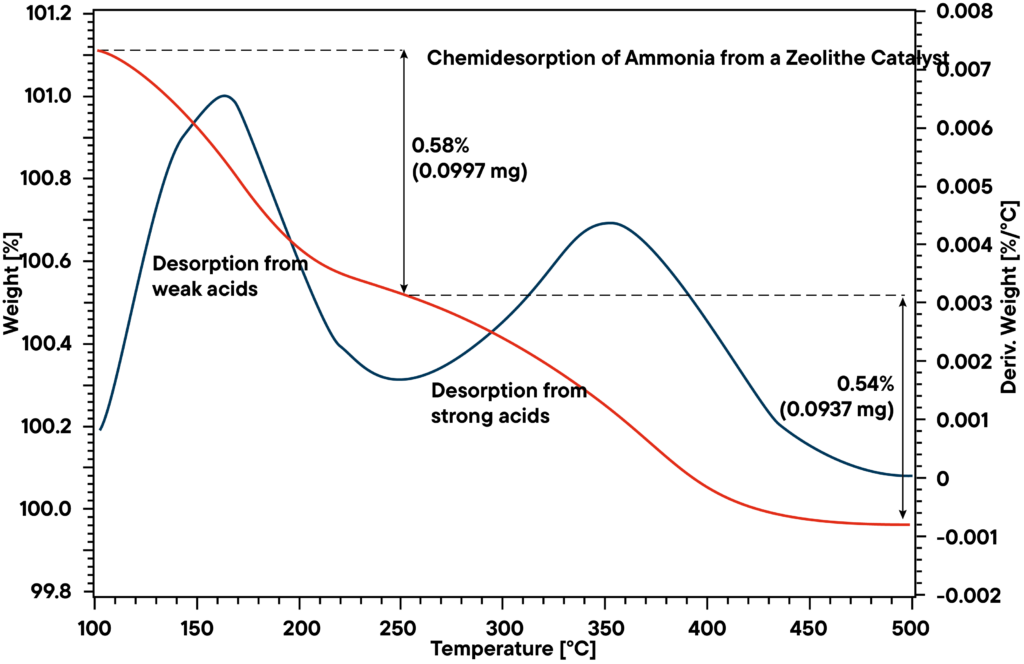
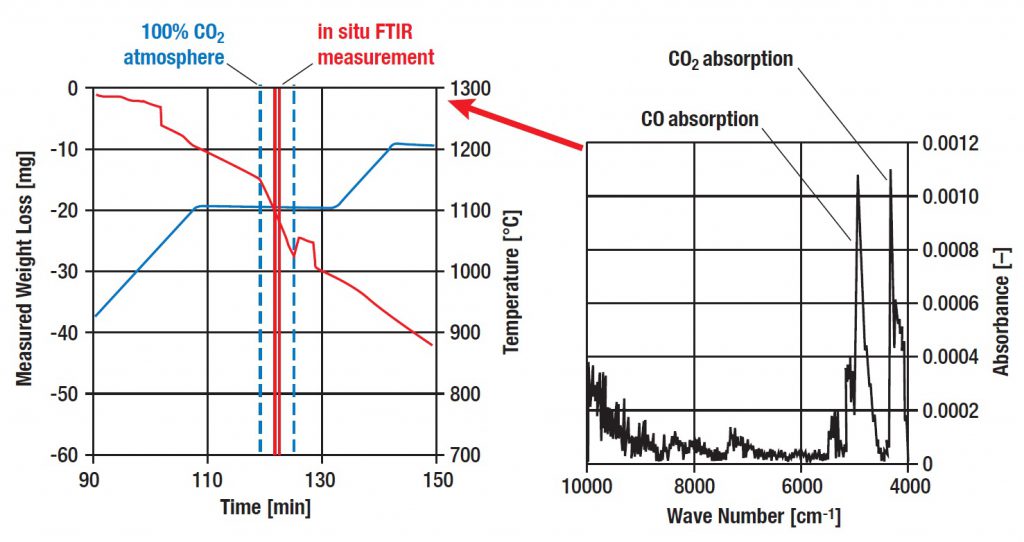
Application example: In-situ FTIR
In the experiment, a charcoal sample was gasified in a CO2 atmosphere.
For this purpose, the charcoal sample was placed in the device and the temperature was increased at constant CO2 pressure.
During an isothermal segment at 1100°C, an enormous mass loss was observed, symbolizing the gasification of the bound carbon (according to the equation C+CO2 2 CO).
The graph shows the in-situ FTIR measurement during the gasification of coal in a TGA system. (Sample temperature: 1100°C, pure CO2 atmosphere at a gas flow rate of 20 ml/min at 273K, 0.013 bar)
The FTIR measurement was performed during the main mass loss step for 30 s.
The CO and CO2 signals are clearly visible in the IR spectrum, which proves the release of CO gas during mass loss.
Well informed
